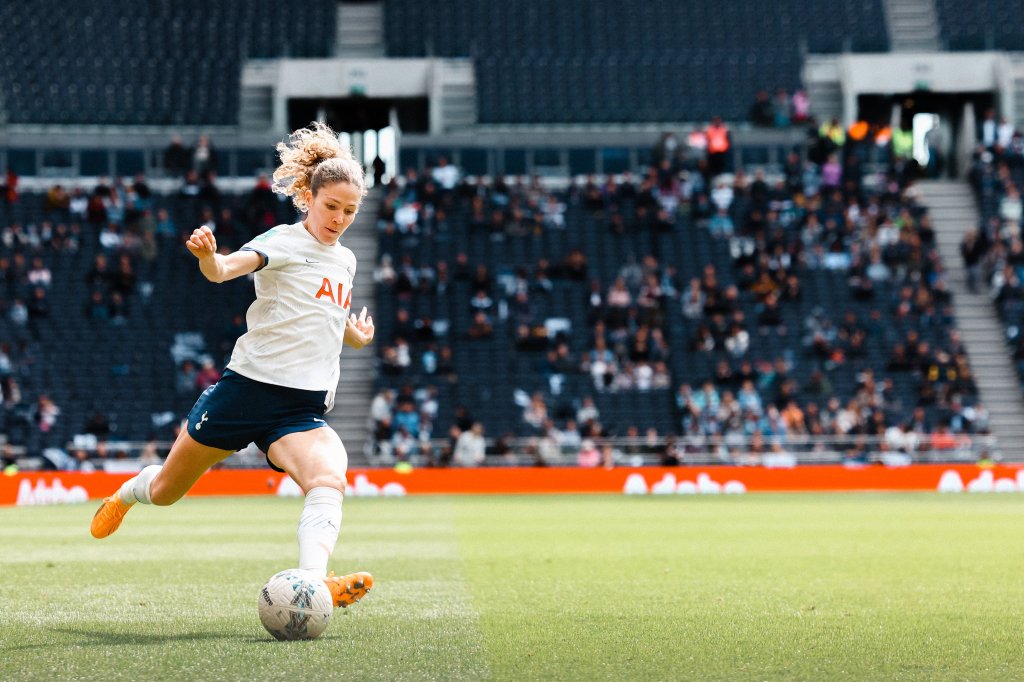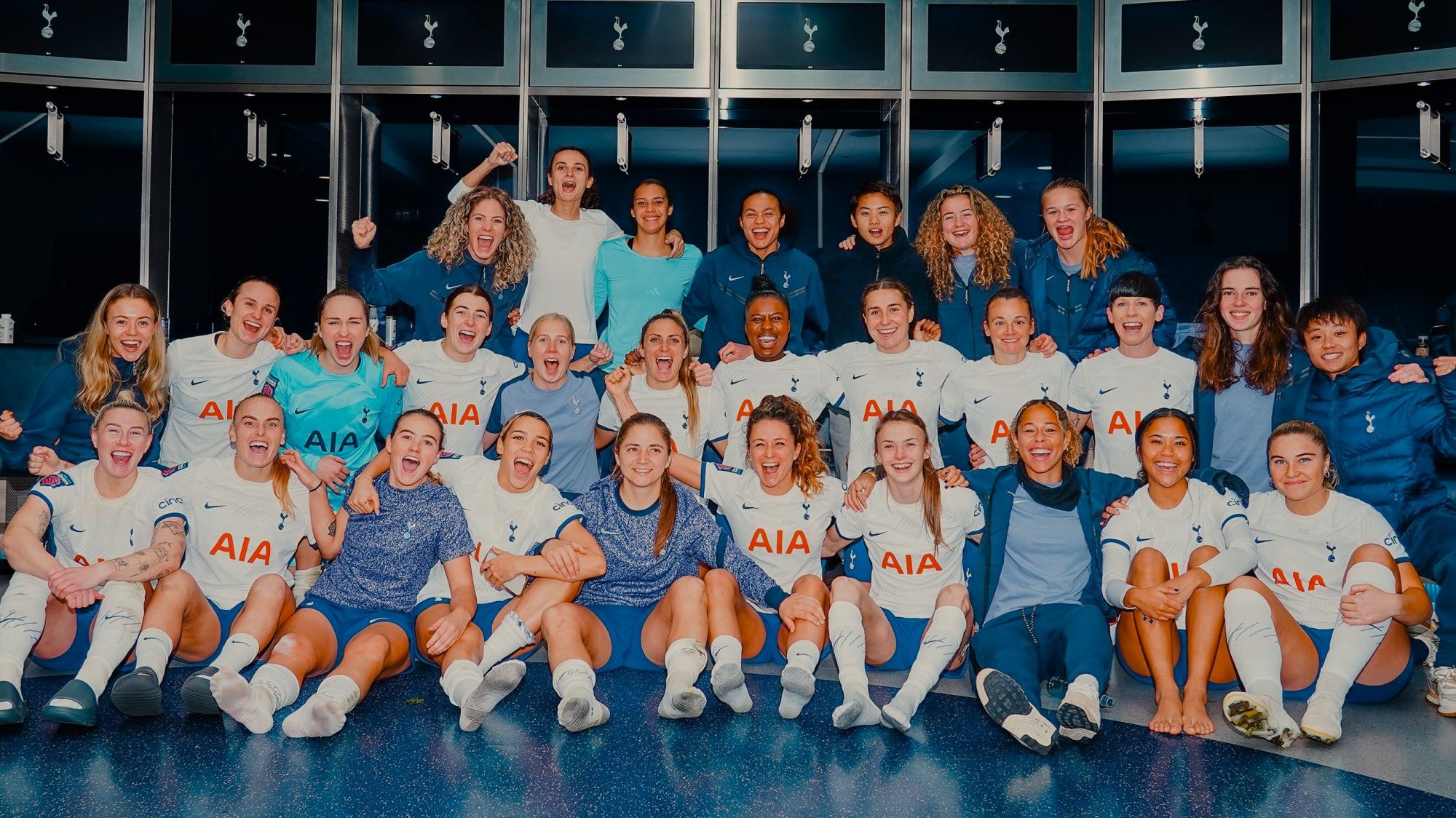By Rachel Cohen
Following on from Part 1 which looked at players who were nailed-on starters for Spurs’ FA Cup Final on Sunday, this blog zooms in on manager, Robert Vilahamn’s, options in Central Defence.
Essentially, Spurs have three central defenders, all of whom have played a decent proportion of the team’s games this season: Molly Bartrip has started seventeen WSL and two FA Cup games; Luana Bühler has started 14 WSL and three FA Cup games; and Amy James-Turner has started 12 WSL and three FA Cup games.

Over the course of the season we have seen a repeated pattern whereby a defender has been injured and the two available make the positions their own, keeping the once injured player out, even when they return to fitness. That is until another player is injured or becomes ill allowing the previously-injured-now-healthy player to step-up and claim a spot.
Thus, in the summer James-Turner was injured and Bartrip and Bühler created a partnership that extended over the first nine games of the season. Then, when Bühler suffered a thigh-strain during the North London Derby, James-Turner stepped in, and she and Bartrip played four WSL matches, plus FA and Conti cup games before Bartrip became ill. Bartrip’s illness allowed Bühler to again get game time, with Bühler and James-Turner playing in the next three WSL matches, as well as the FA Cup Quarter- and Semi-Final.
And, as had previously happened to both James-Turner and Bühler, when Bartrip recovered, and notwithstanding that she had previously been ever-present for Spurs for almost two and a half seasons, the Vice-Captain did not get straight back into the squad. Instead Bartrip had to wait until the 57th minute of Spurs’ last-but-one WSL game, at home against Brighton, when she came on for Bühler, perhaps just to gain some minutes and give the Swiss defender a rest. However, having returned, Bartrip went on to start Spurs’ most recent game alongside Bühler, after James-Turner was ruled out having received a minor injury in training.
All of which means that Spurs have now played multiple games with each of three different central defensive partnerships. Since Robert Vilahamn has repeatedly said that he cares about relationships and parternships, not just individual players, the outcomes of games for each of the three duos is shown in Table 1, below. This includes wins, losses, and draws as well as average goals for and against per 90 minutes under each partnership. Finally, because goals can be a little random – and depend on the finishing prowess of attackers – expected goals and expected goals against per 90 are also included. These better represent the quality of chances created or conceded in games (full explanation of how FBRef calculates xG).
Table 1: Comparing Defensive Partnerships Across WSL Games

These data show that the least successful pairing (in terms of both wins, but also the ratio of Goals for versus against and xG versus xGA) is Bartrip and James-Turner. That is interesting because it might be expected to be the partnership that best covers all the bases: Bartrip is the best on the ball and most attack-minded of the three defenders, but also throws her body into clearances, while James-Turner probably the strongest aerially and at in the box defence – and has shown she can double up as an extra striker. All of which might suggest that their styles were complementary. Indeed, in some games they have performed excellently (the home North London Derby a standout) but this has not consistently been seen in results.

Conversely, Bühler and James-Turner, the most recent of the three pairings to get game-time, have the best win ratio (with no losses) and the best ratio of goals for/against and xG/xGA. They have played only three WSL games (giving a smaller sample size). But their win record is sustained if you look at the two cup games played. Indeed, Vilahamn described relations between the two and Becky Spencer as “amazing” in the run-up to Manchester United away.
The central defensive partnership Vilahamn has used most often is, however, Bartrip and Bühler. Games in which these two were paired are the highest-scoring: both the highest goals for and also highest goals conceded (as well as highest xG and xGA, meaning the best chances created and best chances allowed to opponents). It is worth noting here that the Bartrip/Bühler numbers are seriously impacted by two big defeats (Manchester City 7-0 and Manchester United 4-0) that came in November/December 2023. If we exclude those their games are still high scoring, but with a better goals for/against ratio (an average of 2 goals for and 1.4 against per 90). That said, one of the big losses was against Spurs’ upcoming opponents, Manchester United, so it makes sense to retain these data in any analysis.
The big takeaway from all this is that defensively the Bühler/James-Turner partnership is the stingiest but in games with the Bartrip/Bühler partnership Spurs score more goals. And while you cannot attribute goal-scoring to a central-defensive partnership there are perhaps links. Namely that in a team that plays the ball out from the back, differences in the three defenders’ passing may affect how Robert Vilahamn’s team build attacks.
Table 2: Comparing the passing of Spurs’ central defenders.

Table 2 shows that Molly Bartrip and Luana Bühler typically complete about 15 more passes per game than Amy James-Turner. Most of this is accounted for by a much greater number of short passes, typically fast one-twos which move the ball between defenders or between defenders and midfielders, to create the space to set an attack. In addition, Bühler and Bartrip make more progressive passes, more passes into the final third than James-Turner and, Bartrip especially, completes more long passes. That includes passes that switch play from one side of the pitch to the other. We saw examples of this in the last two games when, from the left of defence Bartrip started an attack by picking out Ashleigh Neville on the right wing.

All of which is to say that Vilahamn needs to decide what his priority is for the final: defensive solidity or chance creation. Of course, the decision may be made for him, should Amy James-Turner not have recovered from the minor injury sustained in training which meant she was unavailable to play against Everton on Saturday. But assuming she does recover there is an interesting choice to make.
If it were up to me, I would probably opt for the passing fluidity the Bartrip/Bühler partnership offers. Not least because in the last matchup with Manchester United (with Bühler/James-Turner in defence), Spurs produced a very creditable draw but were pinned back throughout the second half, struggling to create chances, and taking zero shots. While there is no guarantee that it would have been different with a more progressive defensive partnership it might have been. And, while sentiment is unlikely to influence Vilahamn, Molly Bartrip has been very important to Spurs over the last four years, racking up more minutes than any other player, and has this season captained the team in Bethany England’s absence, so it would be sad for her not to get the chance to start at Wembley.
But over the course of the season Vilahamn has become more defensively-focused and in a final in which small margins matter more than anywhere else, it would not be a surprise if he opted for Spurs’ most defensively solid partnership (Bühler/James-Turner) in the centre of defence. Then again, should they be training well this week, it’s entirely possible we will see Bartrip and James-Turner given the opportunity to repeat their NLD heroics on an even bigger stage.
That’s it for centre-back options. If you have thoughts leave comments below.
Coming next: Attacking Dilemmas.



4 Replies to “Predicting Spurs’ FA Cup Final Team. Part 2: Vilahamn’s Options in Central Defence”